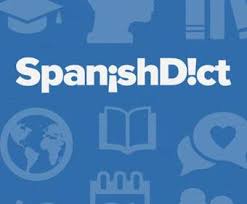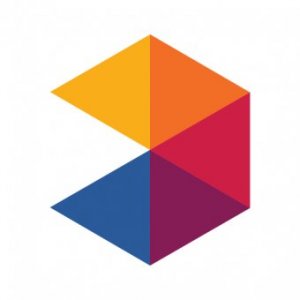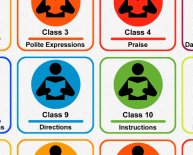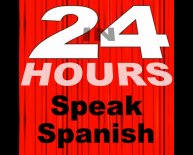
Spanish news articles for Beginners

5 Best Spanish apps for beginners
When you’re just getting started with a language like Spanish, you want to make sure you have access to a rockstar line up of apps that will help you make the most of your early language learning efforts. Some programs can introduce you to high frequency Spanish vocabulary words, while other present basic grammar. You can find apps based on memory strategies and even platforms that allow you to explore foreign newspapers.
From dictionaries to YouTube, the Internet and your smartphone will be important tools to keep you motivated, on track and self-efficacious in your learning. Beginner learners come in all shapes and sizes. Some are children getting started with their first foreign language. Others may be adults who are trying to get back the Spanish they learned years ago in high school. Regardless, of why you have decided to learn Spanish, apps can introduce you to new vocabulary and help you keep a record of what you are learning.
More importantly, technology such as smart spaced repetition, can even predict when you will forget words and provide you with adaptive practice exercises to prevent attrition (also known as forgetting). There’s an app or two for everyone, you just have to explore your options.
What do beginners need the most?
Vocabulary Words are the building blocks of language and without them you won’t be able to do much in Spanish. The more Spanish you learn, the easier all 4 skills will become and the better you will be able to learn future vocabulary, in context, when you read or listen to authentic text.
Motivation It’s important to keep yourself motivated in the first few weeks and months of study when the going is still tough. You can do this by keeping in mind why you wanted to learn Spanish in the first place, measuring your progress to see how far you’ve come and finding a language exchange partner or tutor to give you feedback and encouragement.
Repeat exposure When you first learn a vocabulary word, you need to see it again in 36 hours in order to ensure it makes it into longterm memory. Spanish may be one of the easier languages to learn but that doesn’t mean you can just snap your fingers and be fluent. Learning a language takes a lot of regular repeat exposure at the right intervals to ensure you don’t forget anything.
 Strategy training We are born knowing how to learn our first language but when it comes to picking up on a second or foreign tongue, most of us are quite clueless. Strategy training is essential as it teaches us how to go about listening, reading or memorizing vocabulary to make our learning efforts more efficient and effective.
Strategy training We are born knowing how to learn our first language but when it comes to picking up on a second or foreign tongue, most of us are quite clueless. Strategy training is essential as it teaches us how to go about listening, reading or memorizing vocabulary to make our learning efforts more efficient and effective.
Authentic language Language is a real living thing, not just a bunch of stale terms found in a textbook. That means you have to keep yourself immersed in authentic language from early on. This will ensure you’re learning words and phrases people actually use and that you know how to extract meaning in a target language rich environment.
Speaking practice You can start speaking Spanish from your first lesson. In fact, this is recommended because it will teach you to accept that you won’t always understand everything people say to you. It also reinforces the importance of taking risks when constructing your first utterances and not worrying so much about making mistakes.
What apps can and can’t do
If you don’t expect miracles from an app, then you won’t be disappointed. An app alone will not make you fluent. That’s why we don’t advise you shell out any dinero on the supposed latest and greatest methods (the best apps these day are free anyway!).
However, apps can reinforce your learning, answer your questions, introduce you to people you can practice with, enhance your motivation and serve as a mobile reference tool. There’s also the convenience of being able to fit short bursts of language learning into your day to day, whenever you have time to practice.
If you get several of them, you can build out a learning ecosystem where each app serves a different purpose. For example, some apps involve an element of gamification, which makes what you learn, and more importantly, how you learn it, more fun. Others are more like traditional reference materials, only pocket-sized and mobile.
5 Apps to try for Spanish
 SpanishDict It’s a dictionary that goes both ways. You can look up Spanish words for their English definitions or English words to find out how to say them in Spanish. The cards have multiple definitions for different parts of speech as well as audio to help you with pronunciation. You may not find images but SpanishDict has verb conjugations and more importantly, the app works offline! In addition, they have a simple practice game which is addictive as there’s no way to tell which level you are on and the words that come up are entirely random. There’s also a great word of the day notification that pops up and reminds you to check the app and use it daily to learn a few new terms.
SpanishDict It’s a dictionary that goes both ways. You can look up Spanish words for their English definitions or English words to find out how to say them in Spanish. The cards have multiple definitions for different parts of speech as well as audio to help you with pronunciation. You may not find images but SpanishDict has verb conjugations and more importantly, the app works offline! In addition, they have a simple practice game which is addictive as there’s no way to tell which level you are on and the words that come up are entirely random. There’s also a great word of the day notification that pops up and reminds you to check the app and use it daily to learn a few new terms.
Duolingo If you aren’t taking a class or following a self-study book, Duolingo’s language map can be your guide through different categories of vocabulary and grammar. The cool thing about Duolingo is you are motivated to move through the levels by a game driven practice that avoids teaching you grammar directly and helps you learn through manipulating words. The app is adaptive and eventually learns what you need more practice with so it can provide you with just the right activities to strengthen your Spanish skills. It also has a recording feature so you can improve your pronunciation, and occasional pictures in addition to transcription, translation and matching activities.
Lingua.ly Finding the language you really want to learn is as simple as searching for the Spanish equivalent of English words in the dictionary, or is it? You can look up candy and sugar but how do you find words that go with them, like lollipop, gummy bear and marshmallow? An app like Lingua.ly lets you choose which words you want to learn by searching for them in the dictionary and then creating flashcards. It then uses the data on which words you know and are learning to find you Spanish newspaper articles that contain them, along with other terms you should probably learn. In an authentic context, you are likely to meet co-locates and related content, plus you’ll get better at navigating real language to prepare you for immersion in a Spanish speaking environment.
Memrise Sometimes beginners struggle with the basics of learning, like how to memorize so much new information. Memrise is a program that uses memes or visual and sometimes even auditory cues, to help you associate new information with words you already know and provide a shortcut to memory and recall. They have all kinds of free courses for Spanish so you can pick the set of words or phrases you would most like to learn.
This app will give you access to those coveted Spanish speakers we all want an introduction to. You can set up a language exchange, answer their questions on your mother tongue and ask questions about Spanish, for example, how do you say this in Spanish? or is this the correct way of putting it?ˆ. Use HiNative to clarify grammar points, request pronunciation tips and better understand target language culture.
Using technology in the classroom
Teachers might consider dedicating several lessons to teaching students how to use each app. This also doubles as a great blended learning opportunity. You might try generating a list of class questions, opening up HiNative to ask them and having students report back with answers. Assigned homework could consist of playing games on Duolingo, creating Memrise memes or reading news articles on Lingua.ly. You could even give extra credit to students who present creative ways of using apps to build on what you are learning as a group.



















